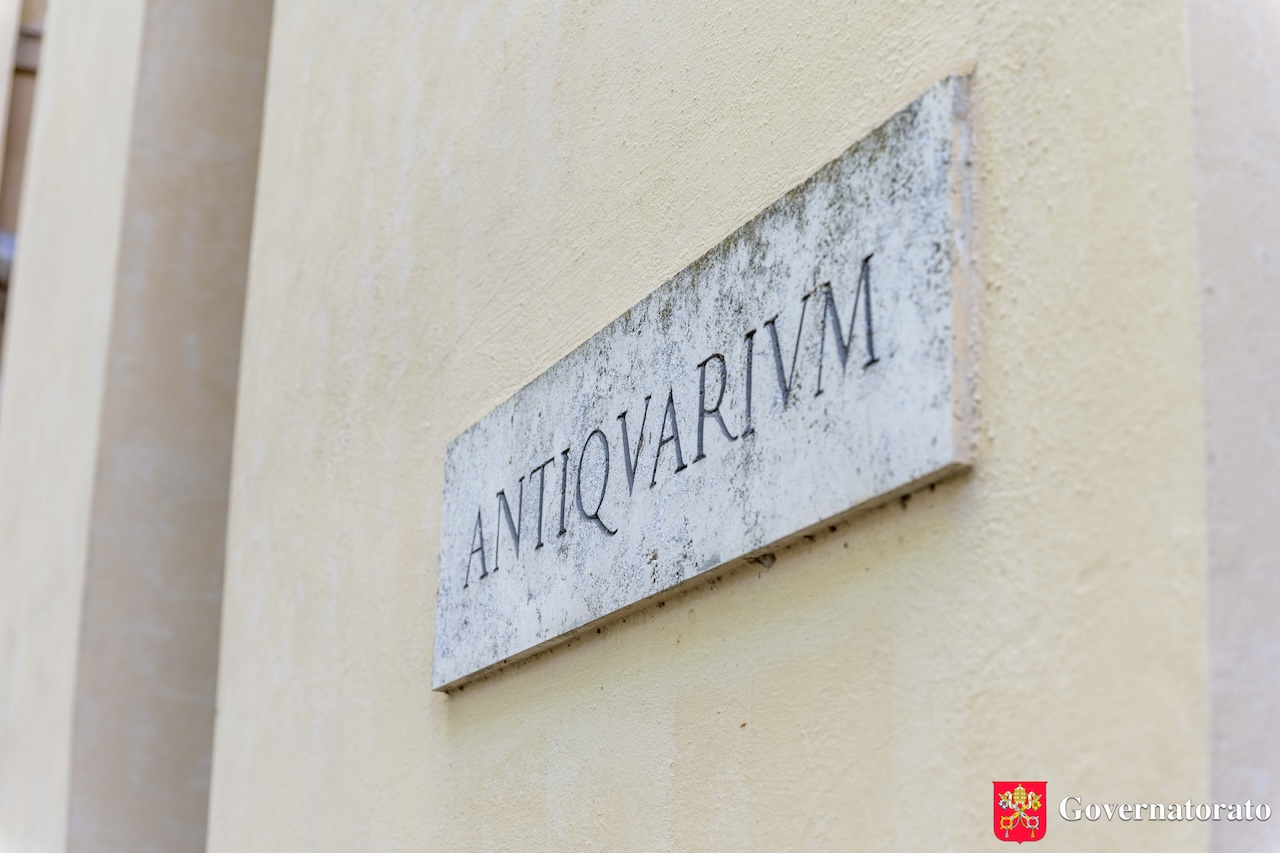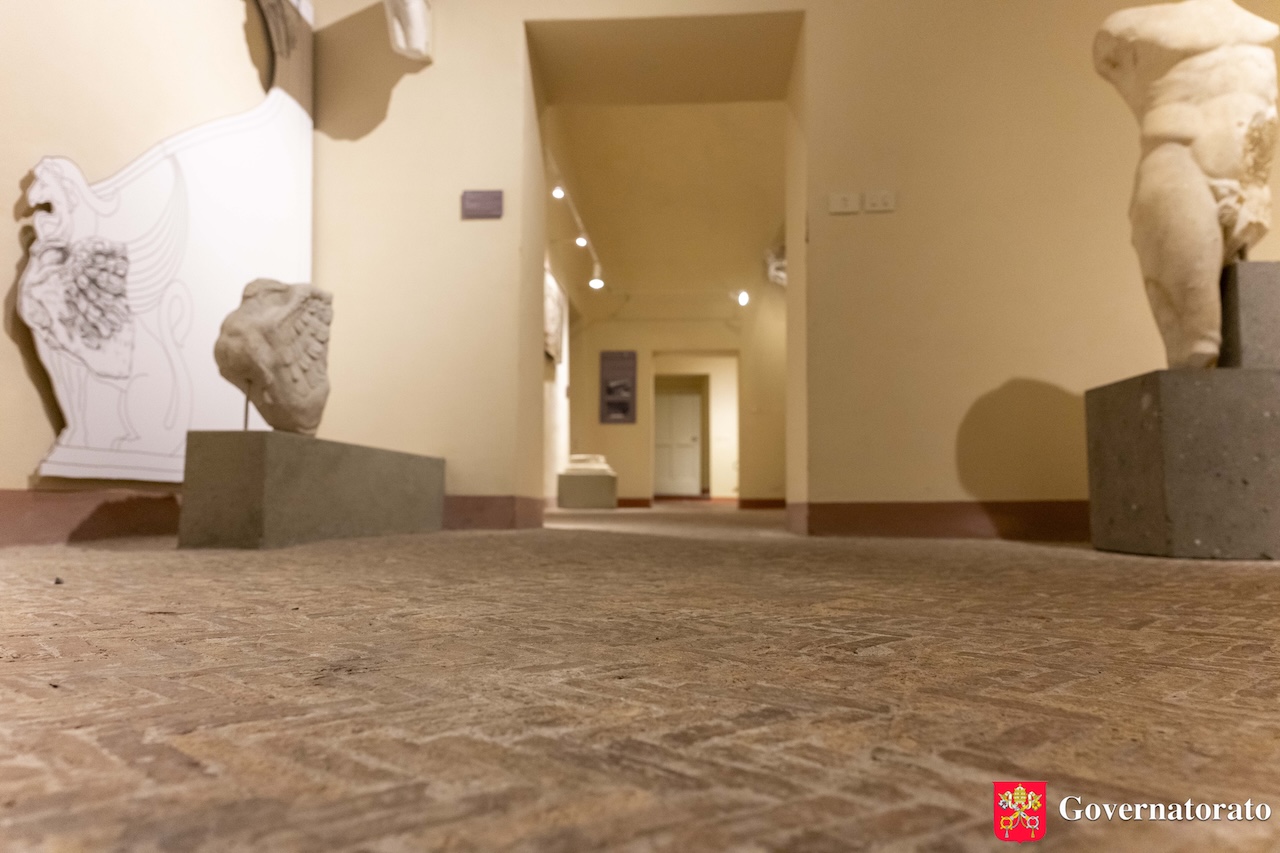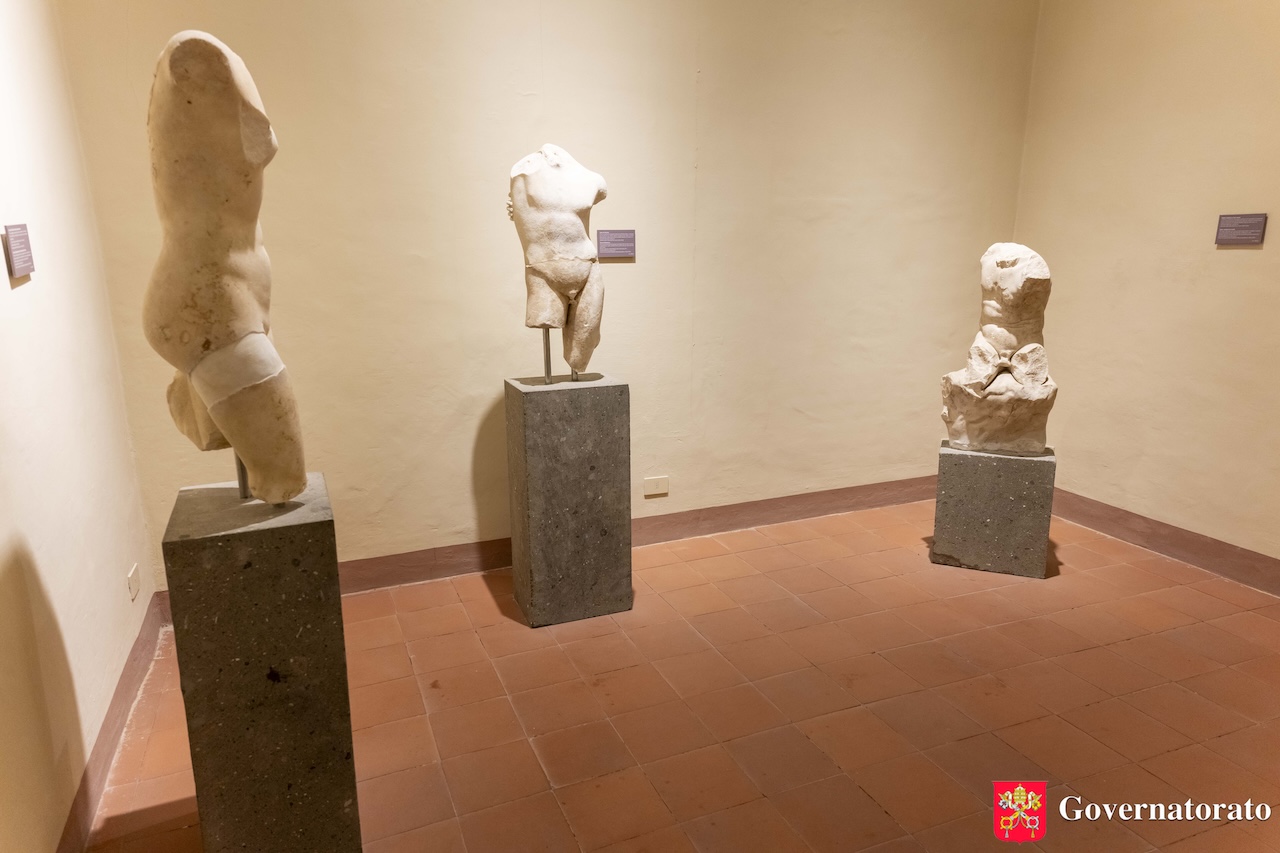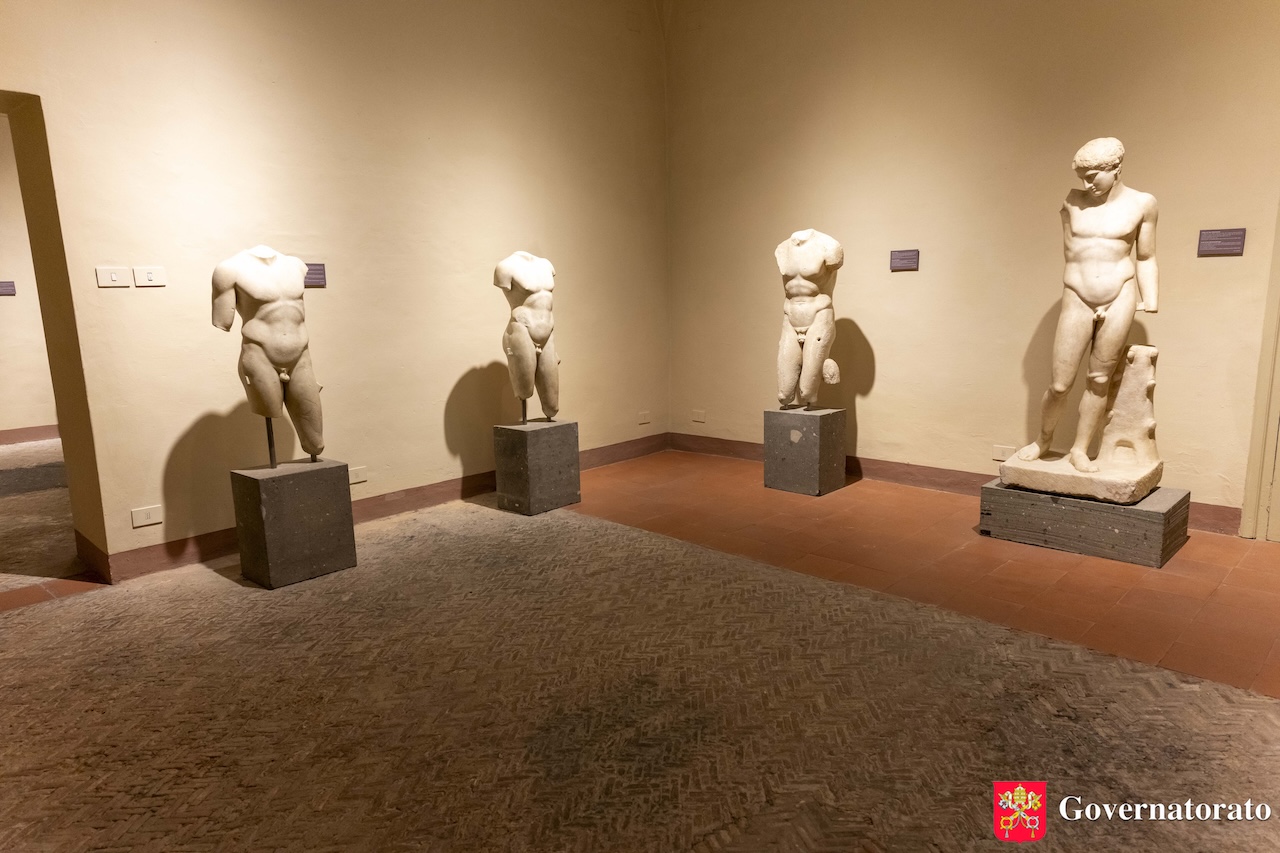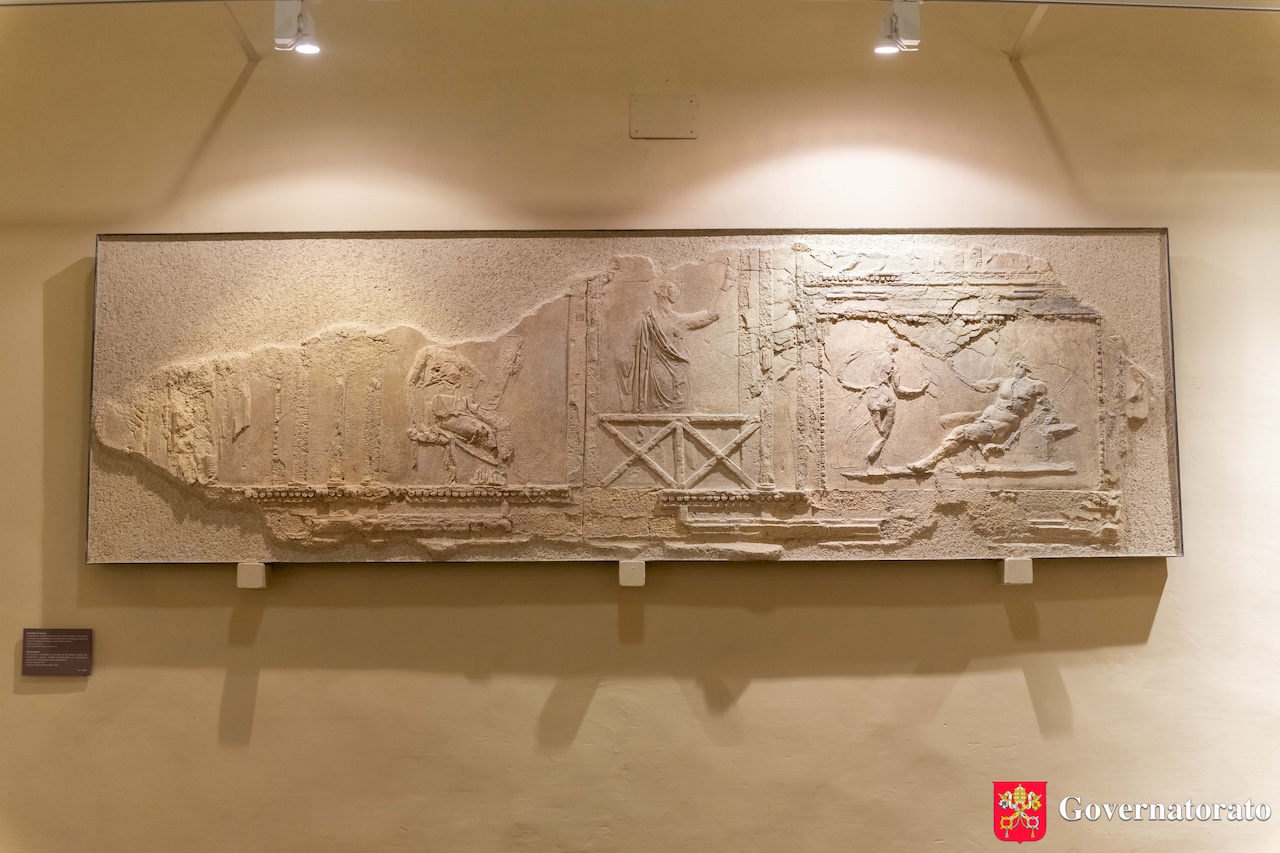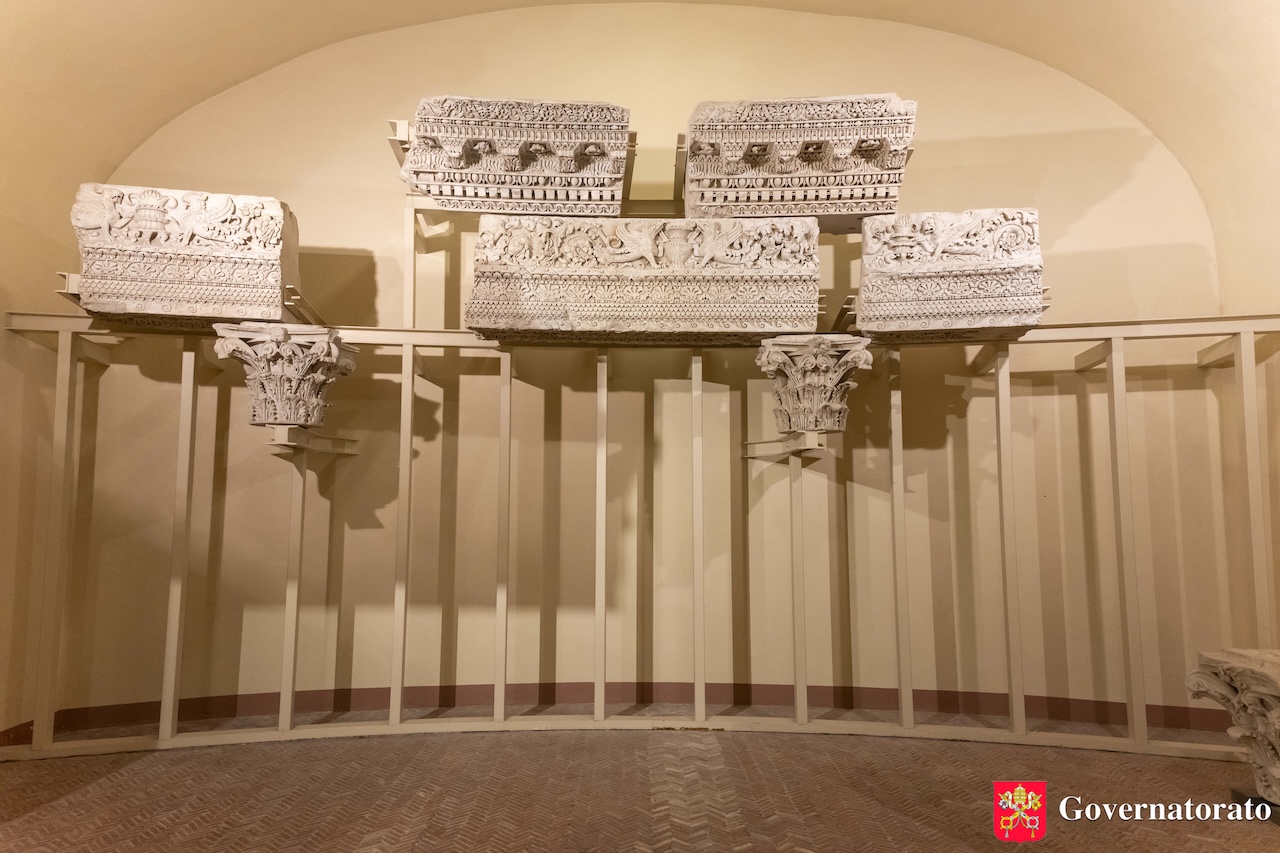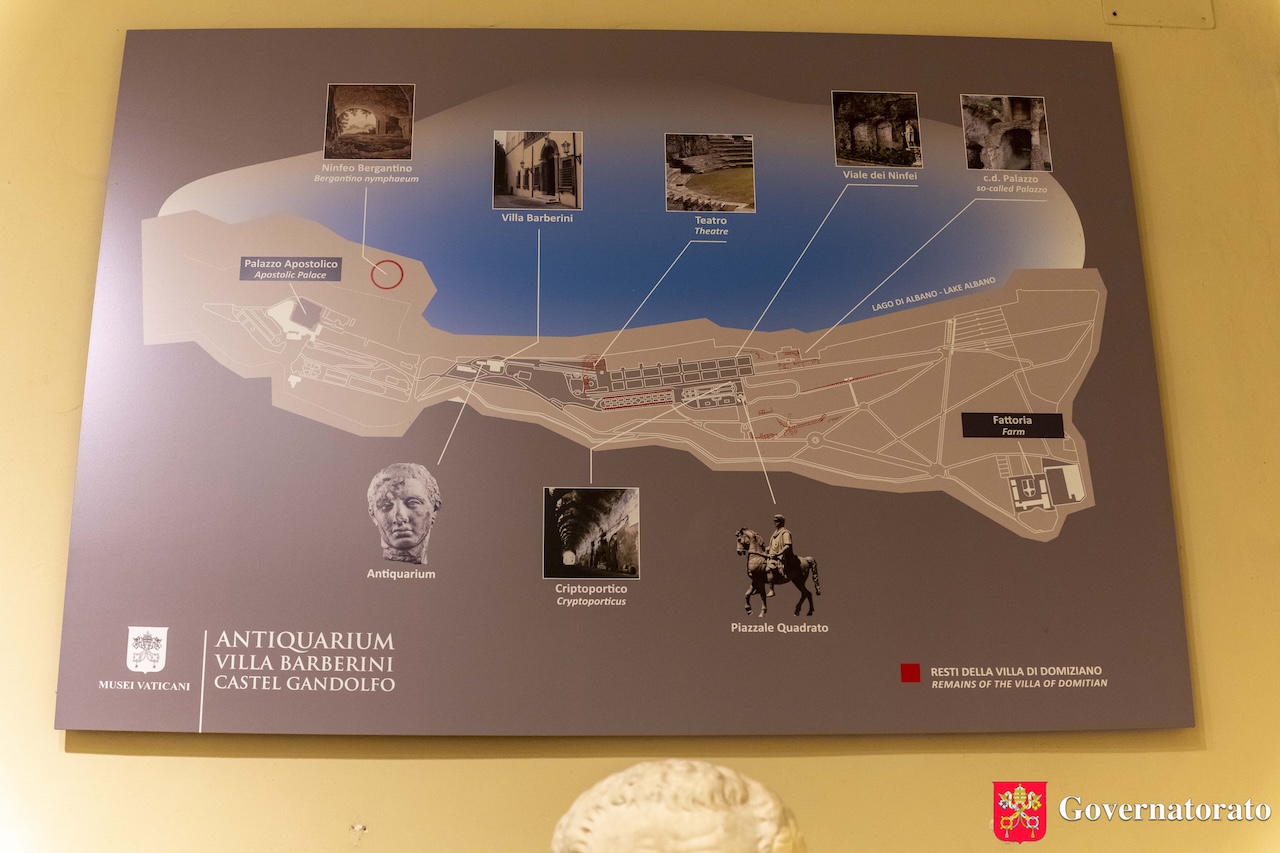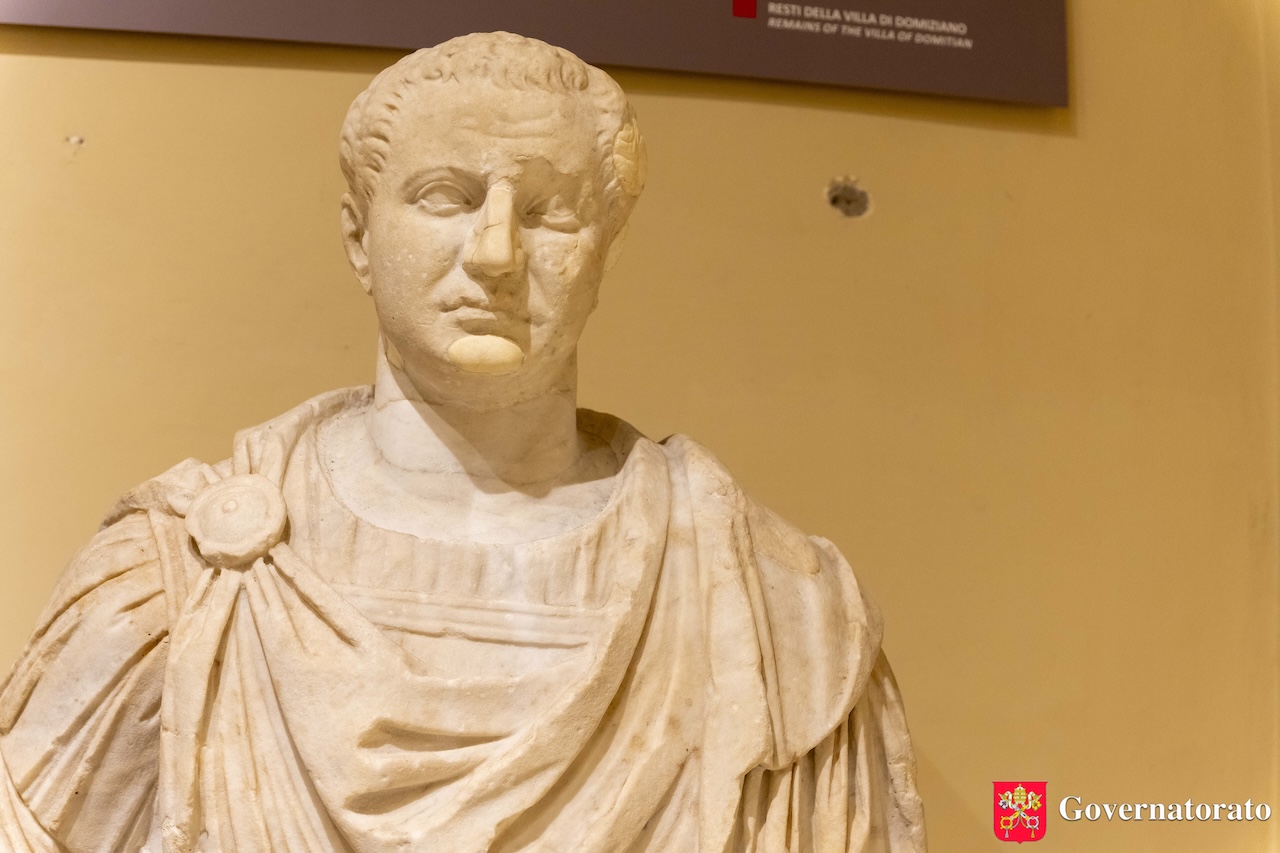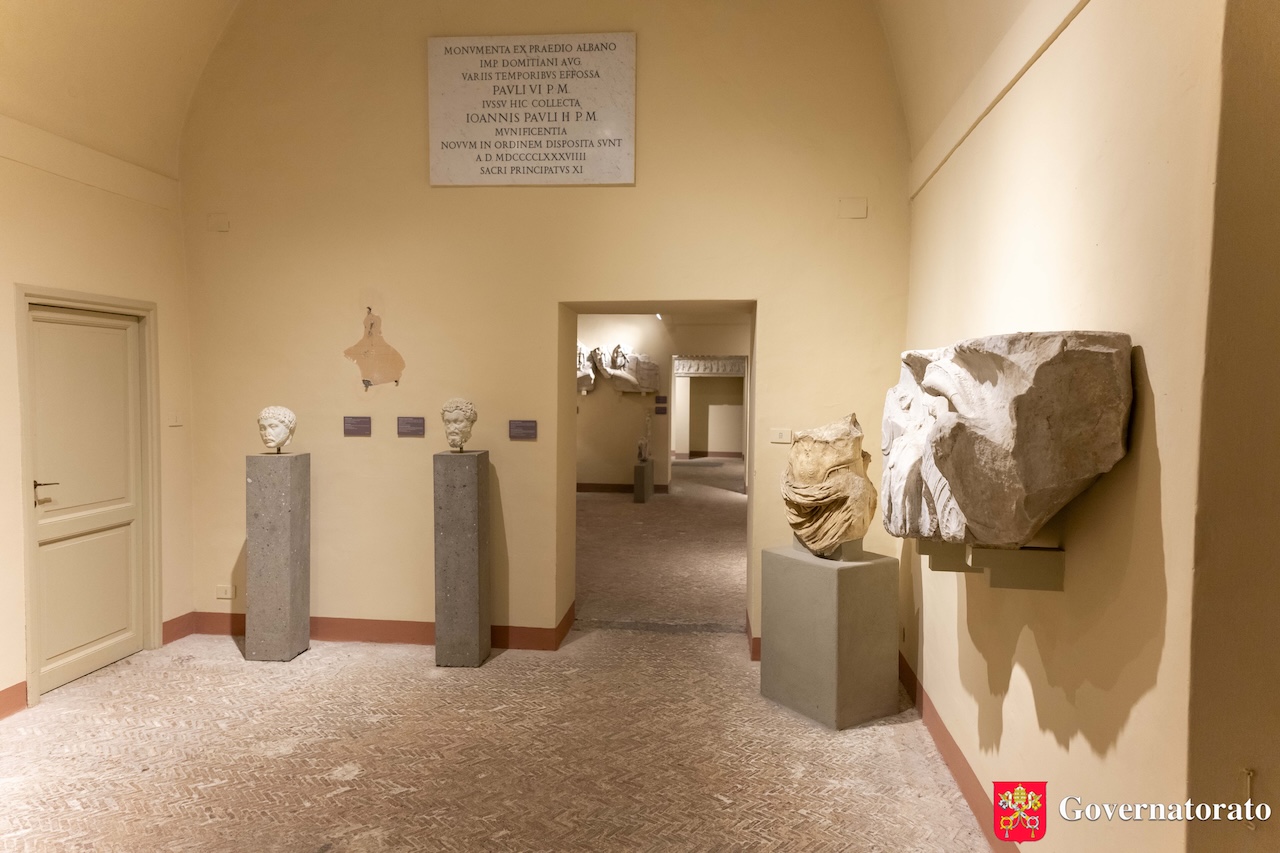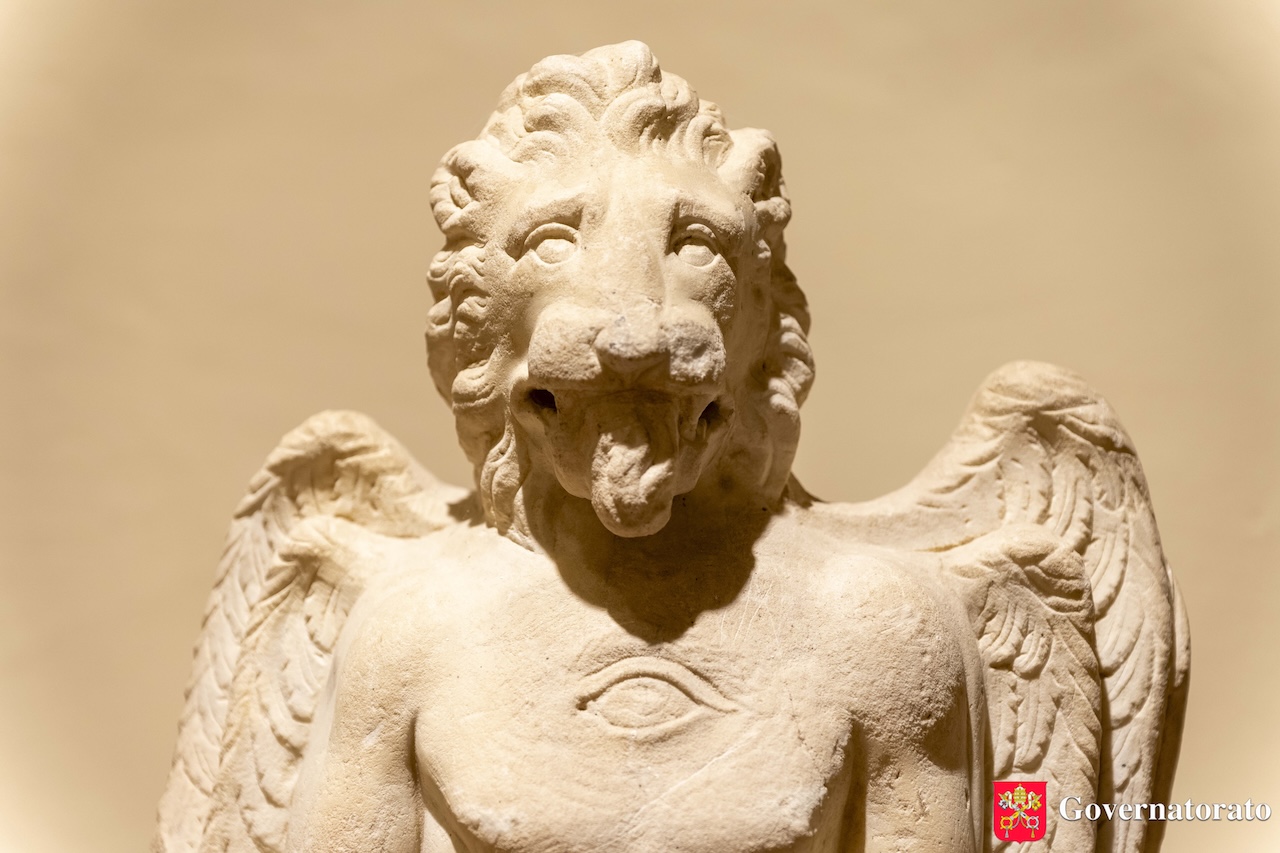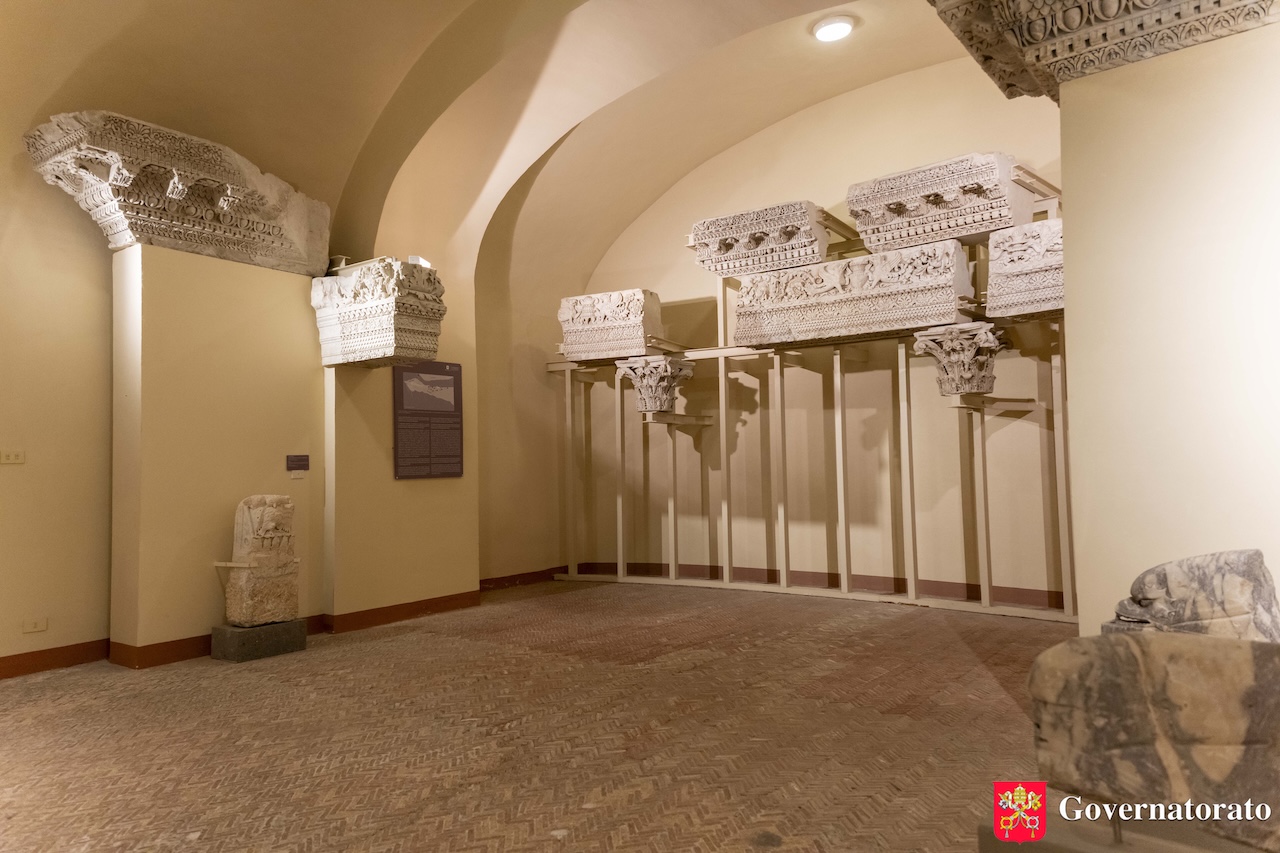Antiquarium at the Pontifical Villas of Castel Gandolfo
On October 26, 1989, the special collection of Roman antiquities known as the Antiquarium was inaugurated in the rooms on the ground floor of Villa Barberini at the Pontifical Villas complex in Castel Gandolfo. The collection is composed mostly of artifacts discovered during excavations conducted in the area between 1841 and 1932. The Antiquarium is exhibited in 7 rooms whose opus spicatum floors [masonry in herringbone pattern] (although with some modern reconstructions and integrations), was an integral part of the grand villa of the Roman emperor Domitian, originally located on the nearby terraces sloping towards the Appian Way.
The collection is divided into three sectors: 1) sculptures from the area of the Villa of emperor Domitian and from his private theater including the marble barriers, in addition to the Westmacott-type Ephebe and the Amelung Athlete, 2) the sculptures of the Bergantino Nymphaeum discovered during Merolli's excavations in 1841 dominated by the group with Reclining Polyphemus and the Anadyomene-type Torso of Aphrodite, inspired by those of the Tiberius cavern in the town of Sperlonga; 3) a group of sculptures, including three herms brought here from the garden of Palazzo Barberini in Rome.
In Room I, we note the presence of a fragment of high relief with a male bust that Filippo Magi, illustrious archeologist of the past century, recognized as a portrait of Domitian, chiseled after the emperor’s legacy was condemned to damnatio memorie. Rooms 2 and 3 contain the fragments of what once constituted Domitian’s private theater, discovered during the pontificate of Pope Alexander VII [1492-1503], and subsequently researched further by scholars Lanciani and Lugli. These are fragments of the architectural decoration and part of the stucco work that once decorated the theater corridor and three fragments of barriers placed above the so-called vomitoria [entrance hallways] of the theater.
Room 4 holds a fascinating collection of athletes dating back to the middle of the 1st century BC in which we recognize the Westmacott-type Ephebe, found between 1930 and 1932 during the excavations for the new substructure walls of the second terrace, and the Amelung-type Athlete head discovered in the area of the former Villa Cybo. It is the head of a young man with short hair held at the back by a sort of clip, from the Augustan age, most likely from an original statue attributed to the Greek sculptor Myron.
Rooms 5 and 6 exhibit the sculptures found in the Bergantino Nymphaeum, also known as Speco or Bagni di Diana, located on the shore of nearby Lake Albano and inspired by the same cavern of Tiberius in Sperlonga. Noteworthy are the remains of the sculptural groups depicting the blinding of Polyphemus and of Scylla. The sculpture of Polyphemus, lying on the rock in a state of drunkenness next to the remains of a companion of Odysseus, is only partially preserved from the waist up.
Of the Scylla group (Room 6), only the base and the lower part of the figure remain, namely a skirt of scales from which the torsos of two dogs emerge.
Room 7 houses the sculptural fragments from the area of the Villa Pontificata, including the Anadyomene-type Torso of Aphrodite - a replica of an original created in the mid Hellenistic era, lastly, the Herm of Winter and a statuette of lion-headed Aion-Cronos with an apotropaic eye in the center of his chest - depiction of a deity from the Mithraic circle, representing the eternity of time.




